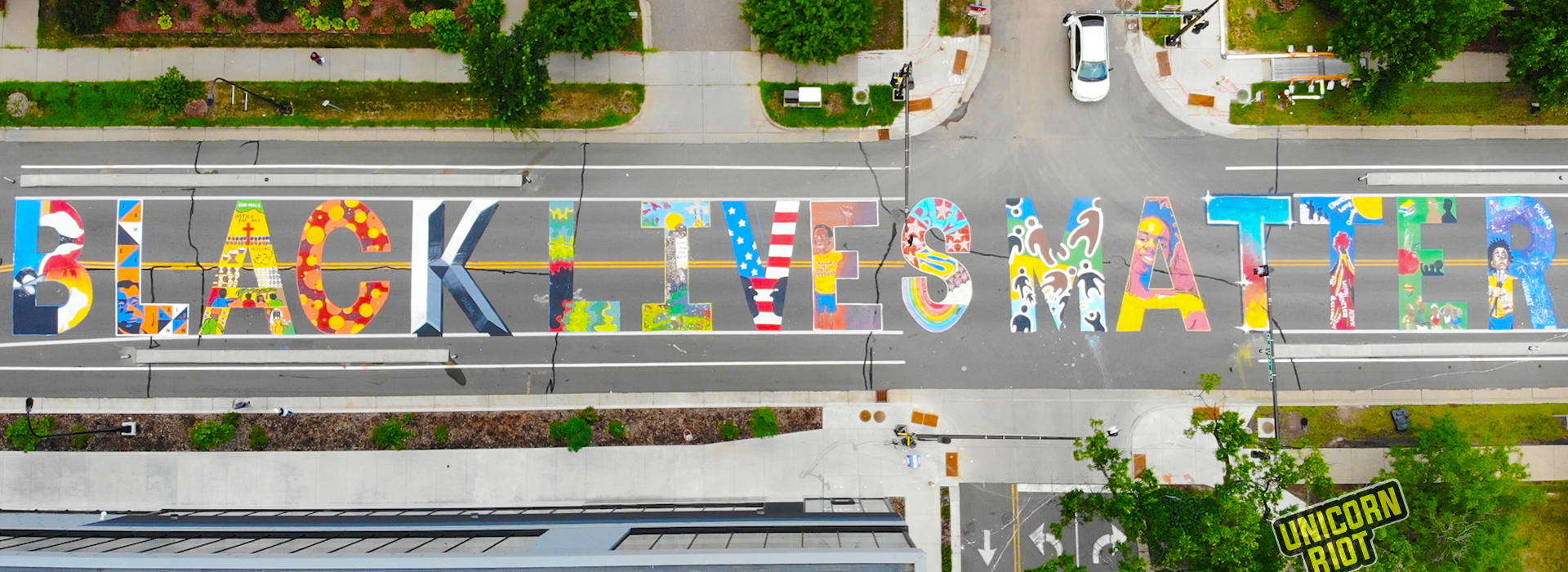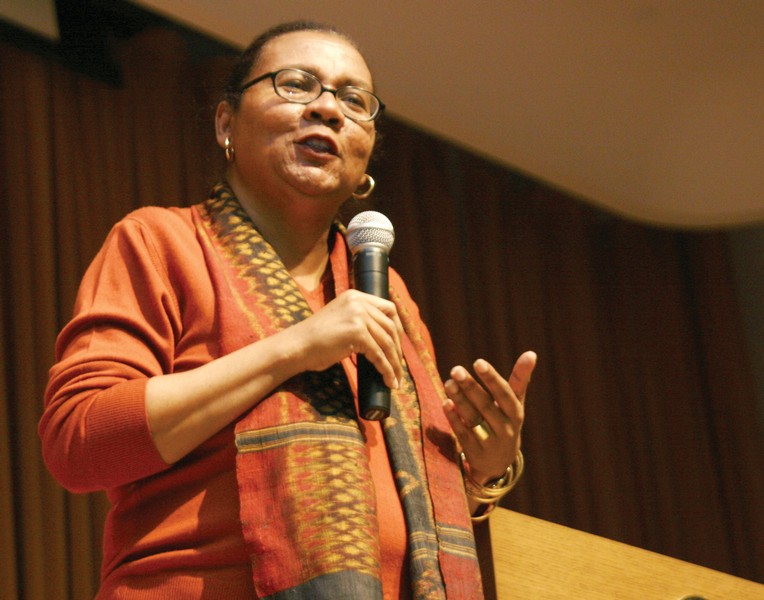
Health Equity & Care Delivery
Black Lives Matter street mural on Plymouth Ave. in north Minneapolis. Photo credit: Unicorn Riot
Three strategies to achieve health equity: Dr. Camara Phyllis Jones
- Value all populations and individuals equally
- Recognize and rectify historical injustices
- Provide resources according to need
Most of the effects of structural racism work without bias because they manifest as inaction in the face of need.
- In the Department of Family Medicine and Community Health, we are working to create equity-empowered systems and relationships with communities, utilizing cultural humility and power-sharing. Read more from NICHQ about the differences between savior-designed and equity-empowered systems: NICHQ Savior-designed vs. Equity-empowered Systems
- Each clinic has a patient-advisory council and unique relationships with community organizations based on their specific location and community needs.
- Cultural humility is an essential practice in moving toward health equity, and you can read more about the definition and framework by Melanie Tervalon and Jann Murray-Garcia's here: Cultural humility versus cultural competence
- Cultural safety is a concept with many of the same principles as cultural humility but it takes accountability and a historical understanding of power one step further. Cultural safety originates from the work done by the Māori community and health practitioners in New Zealand. Read more about cultural safety here.
Structural competency is a "new medicine for the inequalities that are making us sick," from StructuralCompetency.org. This framework acknowledges and works to address structures, systems, and stigmas that contribute to health inequities, determinants, and biases, "with the ultimate aim of developing new platforms, practices, and agendas that address health issues in the present day."
- Structural competency: Theorizing a new medical engagement with stigma and inequality
- "Structural Competency Meets Structural Racism: Race, Politics, and the Structure of Medical Knowledge" by Jonathan M. Metzl and Dorothy E. Roberts, AMA Journal of Ethics (September 2014)

"Center at the margins" is a core tenet of Feminist Theory: From Margin to Center by bell hooks, illustrated and outlined on this website Center/Margin Theory (bell hooks), and further discussed as a tenet of critical race theory in this article.
Trauma-informed care seeks to:
- Realize the widespread impact of trauma and understand paths for recovery;
- Recognize the signs and symptoms of trauma in patients, families, and staff;
- Integrate knowledge about trauma into policies, procedures, and practices; and
- Actively avoid re-traumatization.
- What is Trauma-Informed Care?
- SAMHSA's Concept of Trauma and Guidance for a Trauma-Informed Approach
- Key Ingredients for Successful Trauma-Informed Care Implementation
Incorporate an equity lens into your research.
- We All Count harnessed the universal data project structure and built a systematic and organized way of looking at each step of a data project for equity issues, and created the DATA EQUITY FRAMEWORK
- Program in Health Disparities Research
Patient Experience
We strive for every patient who receives care in our clinics to feel safe, respected, valued, and heard, and to receive excellent clinical care, no matter their identity. If this was not your experience, we would like to hear about it. Please contact us.